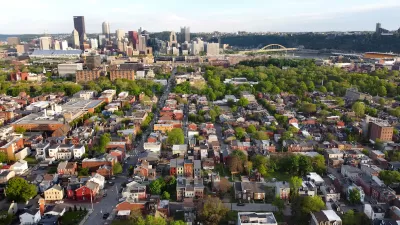Changes in state law that rolls back regulations on septic systems could spark more residential sprawl in Maryland's rural areas.

The Maryland Department of the Environment has removed a requirement for nitrogen removing septic systems except when located next to bodies of water. As Tom Horton of the Bay Journal News Service writes, this change has the potential to generate new rural sprawl development by making development cheaper.
In 2012, Maryland Governor Martin O'Malley passed a law that limited development on primarily agricultural and forest lands and instituted a requirement that new septic systems remove nitrogens, which Horton writes made development more expensive, but also less polluting. The benefit had been to add another barrier to residential development in sensitive areas.
The ties between septic tanks and the countryside are widely underappreciated. State health laws have long served as a crude substitute for more protective rural zoning, which bars development on significant acreages where soils were too soggy, too sloped, too rocky to pass “percolation” tests required to site septic tanks.
“Without septic, you don’t have sprawl,” said Richard Hall, who was Maryland’s secretary of planning for eight years under Gov. Martin O’Malley, Hogan’s predecessor.
The repeal of the septic requirements by current Governor Larry Hogan open the way for what Horton describes as a "backsliding," with areas previously open to limited development now once again viable for sprawl development.
FULL STORY: Smart growth down the drain in Maryland

Alabama: Trump Terminates Settlements for Black Communities Harmed By Raw Sewage
Trump deemed the landmark civil rights agreement “illegal DEI and environmental justice policy.”

Study: Maui’s Plan to Convert Vacation Rentals to Long-Term Housing Could Cause Nearly $1 Billion Economic Loss
The plan would reduce visitor accommodation by 25% resulting in 1,900 jobs lost.

Why Should We Subsidize Public Transportation?
Many public transit agencies face financial stress due to rising costs, declining fare revenue, and declining subsidies. Transit advocates must provide a strong business case for increasing public transit funding.

Wind Energy on the Rise Despite Federal Policy Reversal
The Trump administration is revoking federal support for renewable energy, but demand for new projects continues unabated.

Passengers Flock to Caltrain After Electrification
The new electric trains are running faster and more reliably, leading to strong ridership growth on the Bay Area rail system.

Texas Churches Rally Behind ‘Yes in God’s Back Yard’ Legislation
Religious leaders want the state to reduce zoning regulations to streamline leasing church-owned land to housing developers.
Urban Design for Planners 1: Software Tools
This six-course series explores essential urban design concepts using open source software and equips planners with the tools they need to participate fully in the urban design process.
Planning for Universal Design
Learn the tools for implementing Universal Design in planning regulations.
Caltrans
Smith Gee Studio
Institute for Housing and Urban Development Studies (IHS)
City of Grandview
Harvard GSD Executive Education
Toledo-Lucas County Plan Commissions
Salt Lake City
NYU Wagner Graduate School of Public Service





























